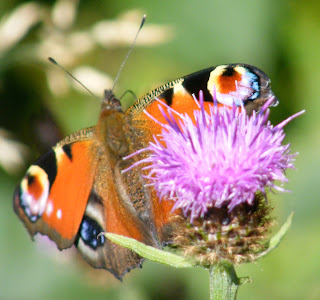 |
| Programme participants on a trail |
Many people are hearing about the concept of ‘Shinrin Yoku’ a Japanese term often translated as ‘Forest Bathing’. Shinrin - Yoku has been seen as a formal activity in Japan since 1982 when it was launched by the Forest Service as a means to encourage the use of forests for health and relaxation. While this term is being used in the national press (see Telegraph link below), there are many other similar examples such as the concept ‘waldeinsamkeit’, the idea of being alone in the woods and at one with nature (Carlile, 2015) and the Kurparks of Germany (De Wit, 2014) which have been in use since the 1850s to encourage walking and sitting in specially created, often municipal forests, some linked to natural springs and spas.
My own work using forests, woodlands and community parks, incorporates mindfulness, sense awareness and a range of other activities such as walking and chi kung. In fact my work in this area is referred to in a report for the UK Forestry Commission (Ambrose - Oji, 2013). Many have benefitted from this approach, one person described going into the forest as having a 'shower of green' that washed away the stress of the day!
Visiting a Forest, a nearby woodland, or simply watching tress in a local park can be a simple way of escaping from the frantic world around us, letting go of the technology which seems to cry out for our non-stop attention and finding a place to stop, to appreciate what is 'real' not 'fake'.
Ambrose-Oji, B. (2013) Mindfulness Practice in Woods and Forests: An Evidence Review., Research Report for The Mersey Forest, Farnham, Forest Research.
Carlile, A. (2015) Nature 365. Richmond, Aus. Hardie Grant Publishing
De Wit, S. I. (2014). Suburbs and super-nature: How the Wasserkrater exposes an invisible landscape.










